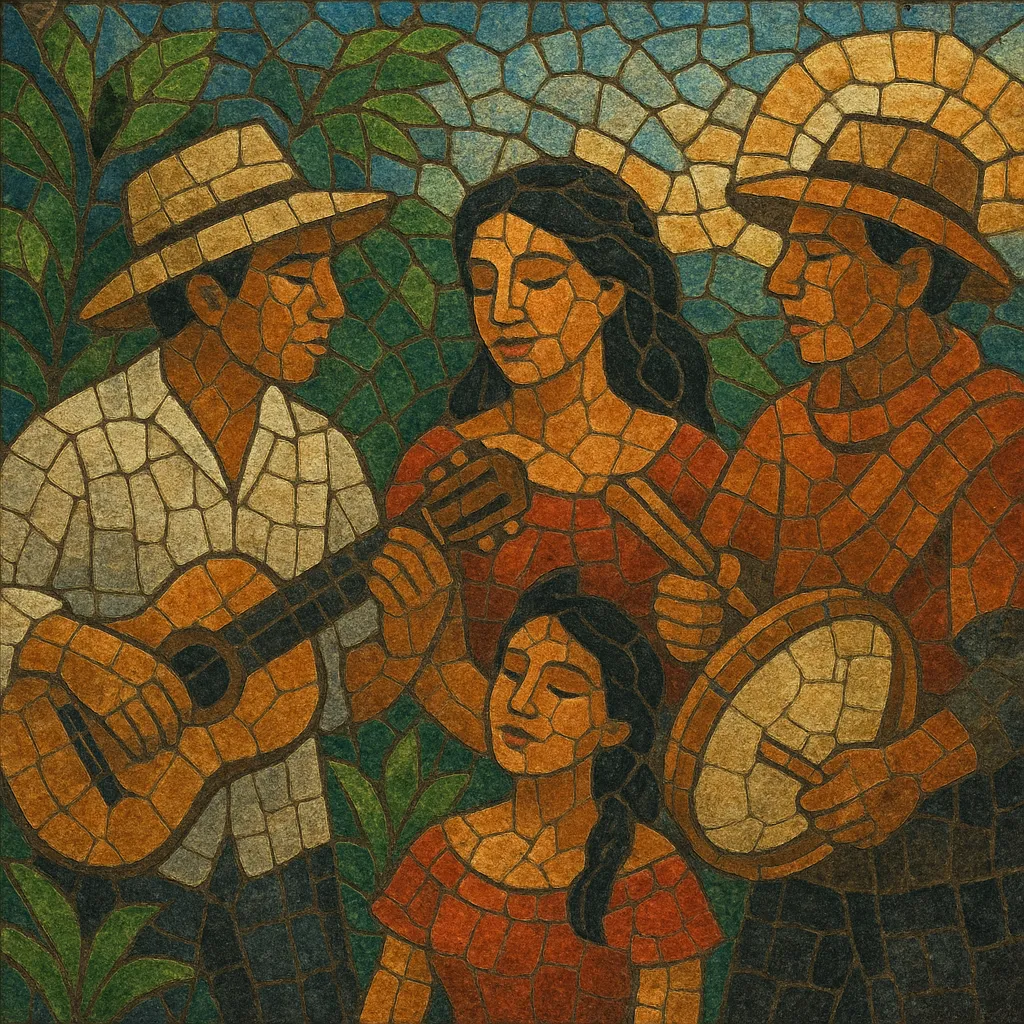Taquirari is a lively song-and-dance genre from the Bolivian lowlands, especially the departments of Santa Cruz, Beni, and Pando. It is emblematic of the camba (eastern) identity and is omnipresent in local festivities, serenades, and Carnival.
Musically it is typically set in a bright duple meter (2/4), sometimes felt with a gentle 6/8 lilt, and features buoyant, syncopated accents articulated by the tamborita cruceña (small drum) alongside strummed guitars. Melodies are diatonic and singable, often in major keys, and the form is commonly strophic with a memorable refrain.
Lyrically, taquiraris celebrate regional pride, nature and landscapes of the eastern plains, and romantic themes, projecting a warm, uplifting character suited to dancing and communal singing.
Taquirari emerged in the eastern lowlands of Bolivia as a synthesis of indigenous mission-music practices and European social dances introduced during the 19th century. The duple-meter drive and partner-dance feel point to strong polka and schottische influences, while local percussion and vocal stylings gave the rhythm its distinctly cruceño flavor. By the early 1900s the basic rhythmic cell and strophic song form were recognizable across Santa Cruz and neighboring regions.
With the growth of radio in Santa Cruz and regional touring ensembles, taquirari spread widely in the 1940s–1960s. Composers and performers such as Gilberto Rojas and Tito Peñaranda contributed enduring taquiraris that became regional anthems, while singers like Gladys Moreno—la Reina del Taquirari—brought the style national prestige. The tamborita ensemble (tamborita, maracas/sonajas, and melodic instruments) and guitar-led groups established the genre’s characteristic sound.
From the 1970s onward, Andean folk ensembles and urban bands across Bolivia began including taquiraris in their repertory, helping the genre move beyond the lowlands. During Carnival and civic celebrations, taquirari functions as a symbol of eastern Bolivian identity. Contemporary arrangements often add violin, accordion, and bass, and artists blend the style with pop-folk textures while preserving its danceable pulse and celebratory ethos.


